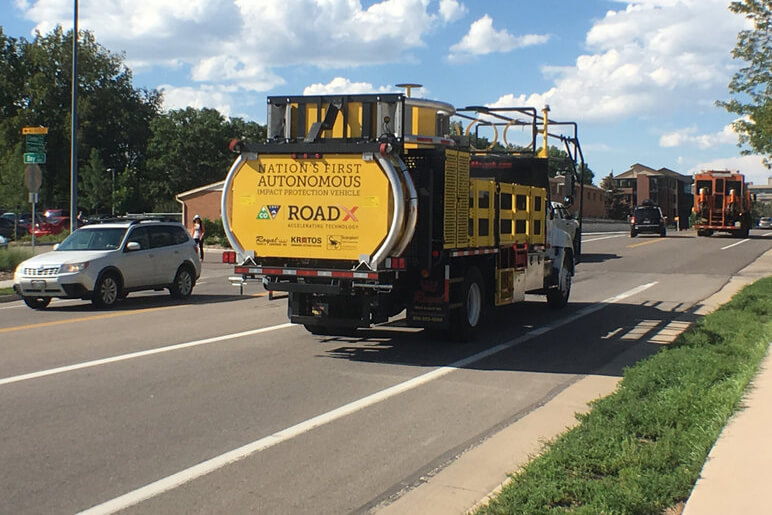NJLTAP Enews Volume 20 – Issue 4 – July/August 2018
Through EDC efforts, the Smarter Work Zones (SWZ) program has been publicized to organizations nationwide. Numerous state and local agencies adopted the initiative, set goals, and showed marked improvements in work zone safety and mobility in their jurisdictions.
By the end of the EDC promotional period in December 2016, nine states had institutionalized project coordination practices and an additional 18 states had incorporated strategies and software tools into their processes for planning, design, operations, and maintenance. Eleven states had mainstreamed technology tools and strategies, and another 28 states had incorporated applications into their agency practices.
Agency deployments demonstrate the SWZ program’s proven impact. For example, the Smart Work Zones program of the Massachusetts Department of Transportation (MassDOT) not only implements ITS-based alerts for road users about work zones but also provides institutionalized procedures and guidelines for the applicability and recommended use of technology applications across the state. According to the concept of its operations document, the goal is to consider and apply ITS tools consistently based on a specific impact level and a preset scoring criterion.
Other examples include the promotion of connected and autonomous vehicle technologies, such as Colorado DOT’s demonstration in August 2017 of a first-of-its-kind autonomous impact protection vehicle. Traditional rear protection vehicles are positioned behind road crews to protect workers from traffic, but they still involve risk to the vehicle’s driver. The driverless vehicle is designed to withstand hits without the associated risk to a driver. Once positioned in a work zone, the truck mimics the position, speed, and direction of a lead vehicle, which transmits a signal to the trailing driverless vehicle. The truck uses a rear-mounted attenuator, or crash cushion, to absorb or deflect vehicles that cross into work zones.
While official promotion through EDC concluded in 2016, SWZ resources remain available. Transportation agencies can access the SWZ final report, plus other resources, related publications, case studies, tools, demonstration site visits, and webinars are available from the FHWA SWZ website.
ITS applications enhance work zone mobility and safety
The following tools are available to agencies.
- Real-time traveler information systems provide drivers with real-time travel conditions prior to and within a work zone, and may also provide information on alternative routes in the corridor. The goal is to divert drivers away from the work zone when congestion exists.
- Queue warning systems quickly detect the presence of congestion at the work zone and warn approaching motorists that traffic is slowed or stopped ahead.
- Dynamic lane merge systems encourage motorists to merge at specific points as they approach a lane closure, depending on current operating conditions.
- Incident management systems enable agencies, contractors, and responders to detect incidents in the work zone faster, allowing quicker response and clearance.
- Variable speed limit systems harmonize speeds before and within the work zone, calming traffic flow and warning of slowed or stopped traffic ahead.
- Automated enforcement systems detect and capture images of speeding vehicles for enforcement purposes.
- Entering/exiting vehicle notification warns drivers of slow-moving construction vehicles that may be entering the travel lane. It can also warn travelers that a work vehicle is exiting the travel lane and not to follow it into the work space.
- Performance measurement systems monitor and archive data on traffic conditions to support real-time traveler information dissemination, modify operations, and facilitate evaluation.
July/August 2018
This newsletter is published biannually by the New Jersey Local Technical Assistance Program, Center for Advanced Infrastructure and Transportation, Rutgers University, using funds from the Federal Highway Administration and the New Jersey Department of Transportation. The opinions, findings, or recommendations expressed in this newsletter are those of the New Jersey Local Technical Assistance Program and do not necessarily reflect the views of the Federal Highway Administration nor the New Jersey Department of Transportation nor Rutgers University. Any product mentioned in this newsletter is for information purposes only and should not be considered a product endorsement.


